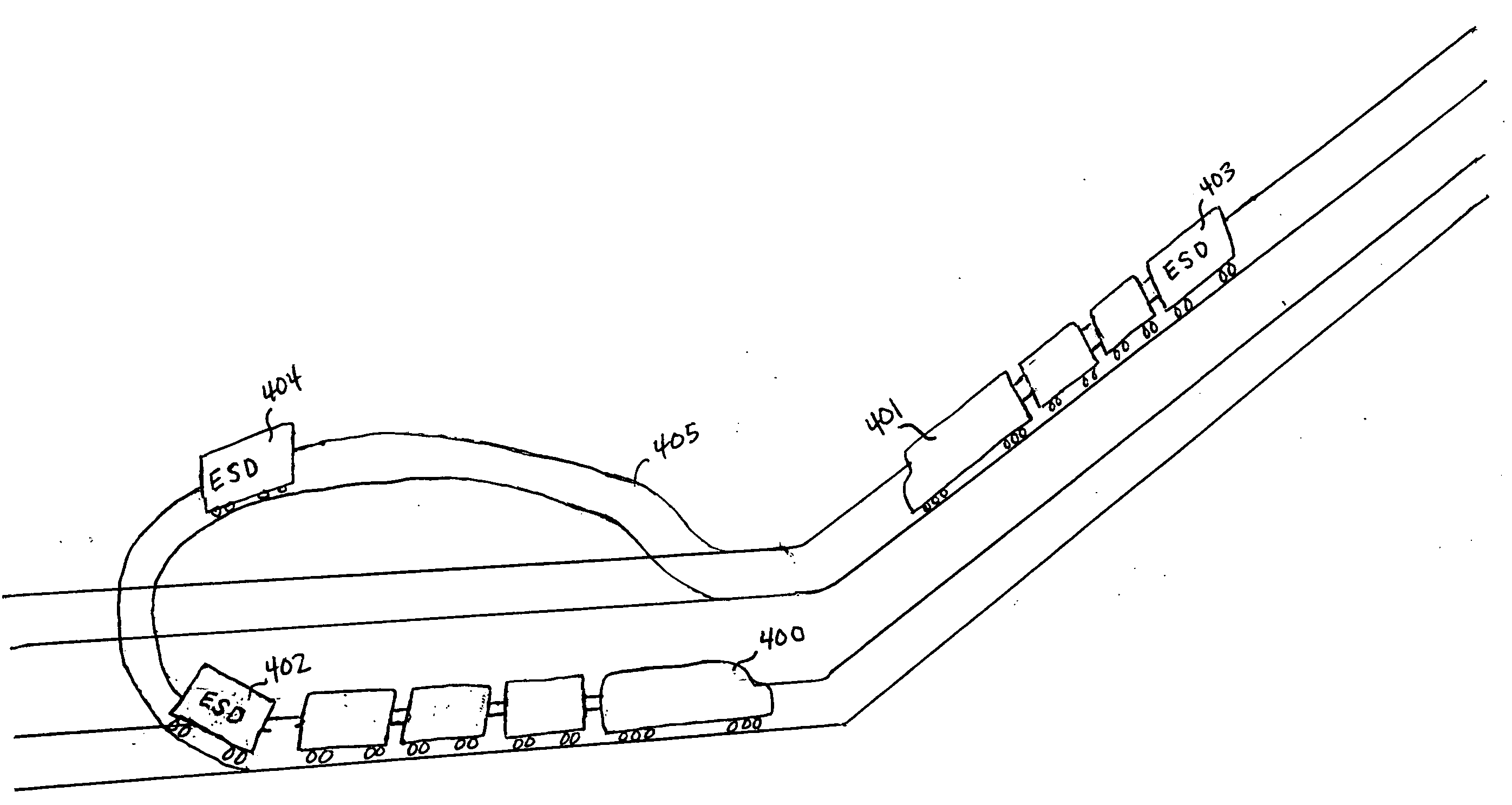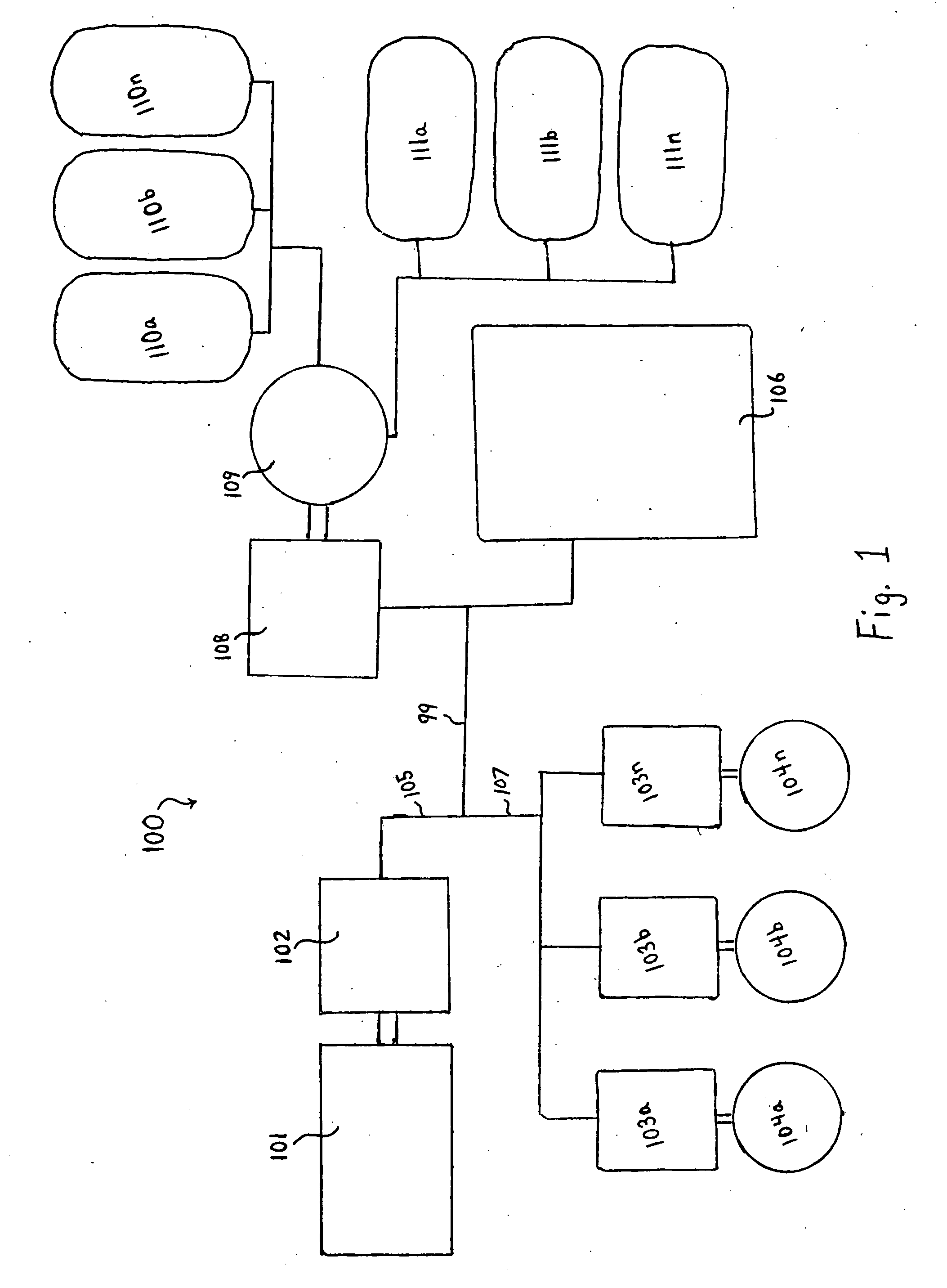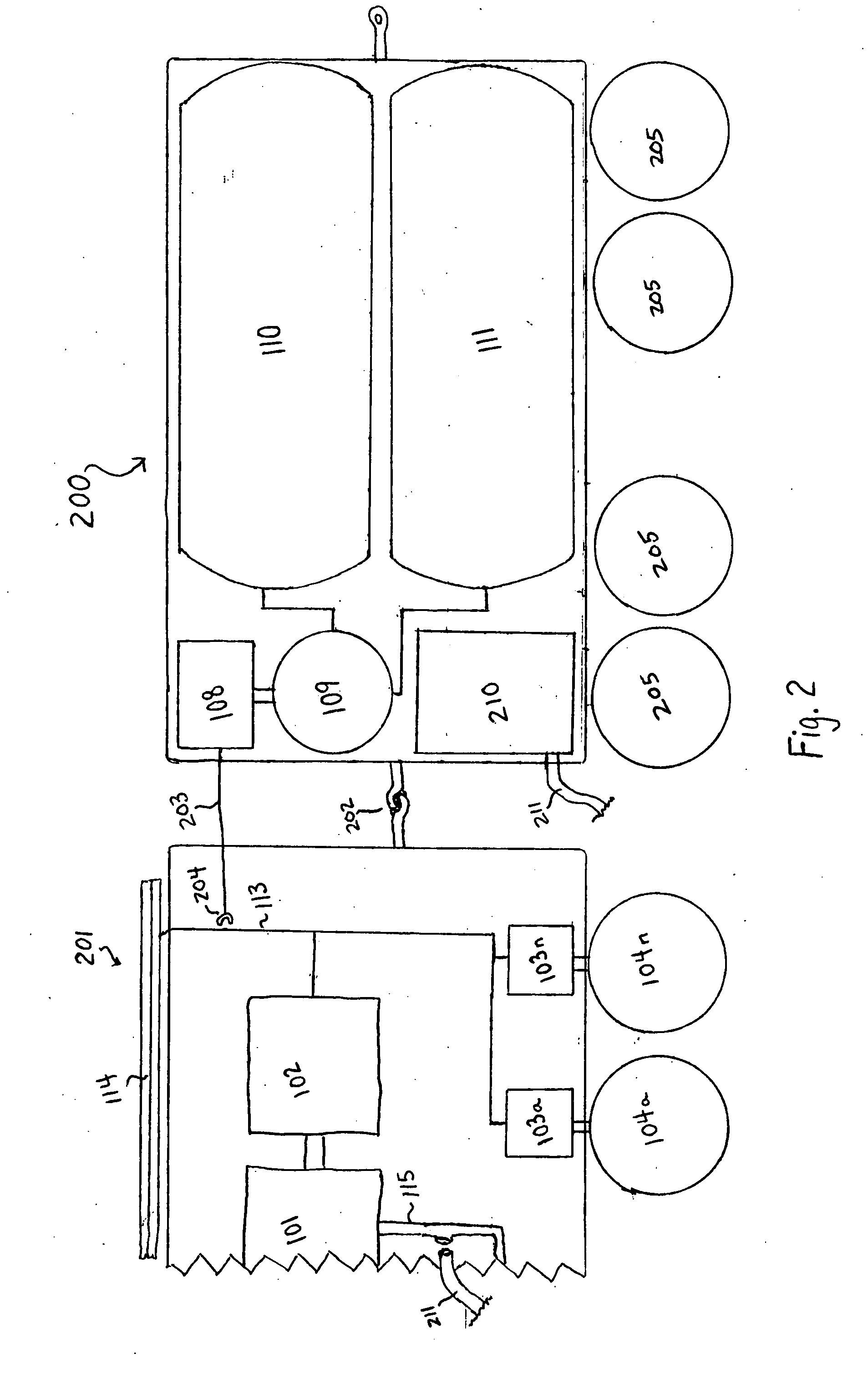Regenerative energy storage system for hybrid locomotive
a technology of regenerative energy storage and hybrid locomotives, which is applied in the direction of locomotives, braking systems, transportation and packaging, etc., can solve the problems of increasing vehicle weight and energy, increasing the cost and size of the battery pack, and reducing the efficiency of the vehicle, so as to avoid conversion losses, facilitate packaging and allowance of greater accumulator volume, and save costs
- Summary
- Abstract
- Description
- Claims
- Application Information
AI Technical Summary
Benefits of technology
Problems solved by technology
Method used
Image
Examples
Embodiment Construction
[0027]FIG. 1 is a schematic diagram of a powertrain of the present invention for use in conjunction with a diesel-electric locomotive.
[0028]Referring to FIG. 1, in diesel-electric locomotive 100, an internal combustion engine 101 drives a first main electric / motor generator 102 to provide electric current through lines 105 and 107 to drive multiple electric motor / generators 103a, 103b . . . to 103n, as motors to drive wheels 104a, 104b . . . to 104n of the locomotive. Any actual number of motors and / or wheels may be used. Propulsion of the locomotive is performed as a known diesel-electric locomotive.
[0029]In dynamic braking, electrical power generated by the traction motors 103a-n is routed to motor / generator 108, which then operates as a motor to mechanically drive hydraulic pump / motor 109 as a pump. When driven by motor 108, pump / motor 109 pumps fluid from low pressure accumulators 110a-n to a bank of high pressure accumulators 111a-n, for additional storage of energy. Any number...
PUM
 Login to View More
Login to View More Abstract
Description
Claims
Application Information
 Login to View More
Login to View More - R&D
- Intellectual Property
- Life Sciences
- Materials
- Tech Scout
- Unparalleled Data Quality
- Higher Quality Content
- 60% Fewer Hallucinations
Browse by: Latest US Patents, China's latest patents, Technical Efficacy Thesaurus, Application Domain, Technology Topic, Popular Technical Reports.
© 2025 PatSnap. All rights reserved.Legal|Privacy policy|Modern Slavery Act Transparency Statement|Sitemap|About US| Contact US: help@patsnap.com



